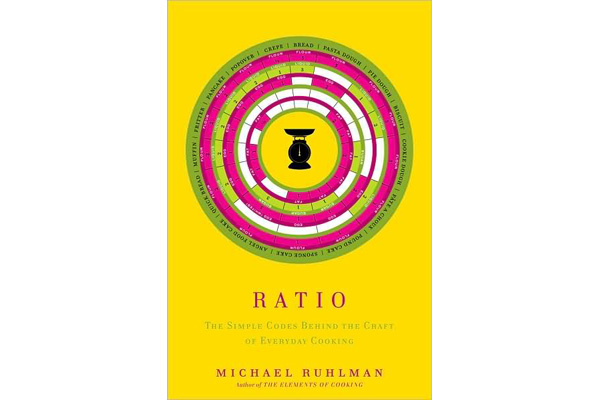Ratio, brilliant new cookbook by Michael Ruhlman
Ratio: The Simple Codes Behind the Craft of Everyday Cooking [$16.20] by Michael Ruhlman is a new cooking reference book that will be getting a lot of use in our kitchen. Instead of laying out recipes, Ratio deals in the fundamental building blocks--the ratios between main ingredients. Bread is 5 parts flour, 3 parts water. There are lots of other variables (yeast, salt, fats, kneading, cooking temp, etc), but the fundamental essence of bread is the ratio of flour to water. Ruhlman gives you the ratio and an example recipe with measurements, but also ideas for lots of variation.

Baking lends itself to ratios than most other disciplines, but the book contains ratios for more than just breads and doughs. The covered ratios are:
- Doughs (bread, pasta, pie, biscuit, cookies, pâte à choux)
- Batters (various cakes, quick bread, muffin, fritter, pancake, popover, crepe)
- Stocks and Sauces ( stock, consomeé, roux, beurre manié, slurry)
- Farçir (sausage, mousseline, brine)
- Fat based sauces (mayonnaise, vinaigrette, hollandaise)
- Custards (free standing custard, creme anglaise, chocolate sauce, caramel sauce)
Here's an excerpt from the introduction:
Here is another thing knowing a ratio does: it helps you to better understand cooking in general. How does bread differ from fresh pasta? No all that much actually, except that for pasta, egg takes the place of water at a ratio of 3 parts flour and 2 parts egg. What's the difference between bread dough and pie dough? The proportions of flour and water area a little different (3 : 1), but it's the important third ingredient, fat, that makes it pie dough--fat is responsible for making pie dough unlike bread dough, tender rather than chewy.
To get the most out of Ratio, make sure you have a kitchen scale. Most of the recipes use weight measurement and that's hard to duplicate without a proper scale.
